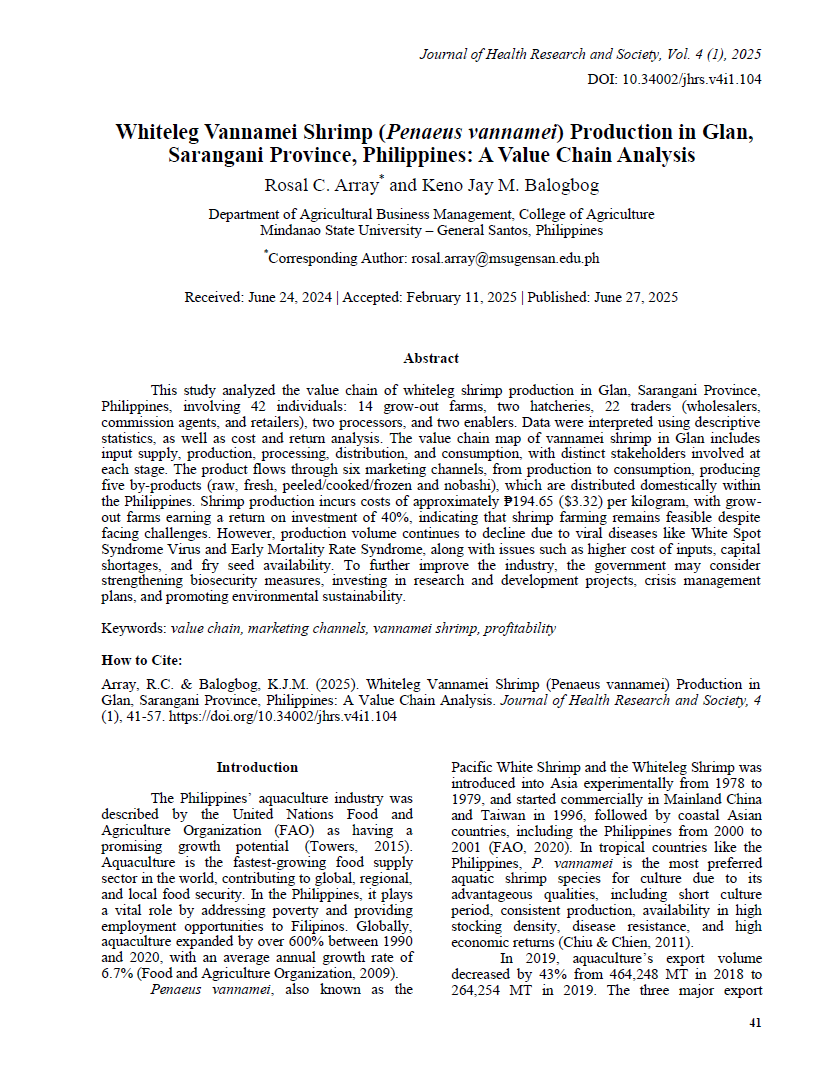Whiteleg Vannamei Shrimp (Penaeus vannamei) Production in Glan, Sarangani Province, Philippines: A Value Chain Analysis
Abstract
This study analyzed the value chain of whiteleg shrimp production in Glan, Sarangani Province, Philippines, involving 42 individuals: 14 grow-out farms, two hatcheries, 22 traders (wholesalers, commission agents, and retailers), two processors, and two enablers. Data were interpreted using descriptive statistics, as well as cost and return analysis. The value chain map of vannamei shrimp in Glan includes input supply, production, processing, distribution, and consumption, with distinct stakeholders involved at each stage. The product flows through six marketing channels, from production to consumption, producing five by-products (raw, fresh, peeled/cooked/frozen and nobashi), which are distributed domestically within the Philippines. Shrimp production incurs costs of approximately ₱194.65 ($3.32) per kilogram, with grow-out farms earning a return on investment of 40%, indicating that shrimp farming remains feasible despite facing challenges. However, production volume continues to decline due to viral diseases like White Spot Syndrome Virus and Early Mortality Rate Syndrome, along with issues such as higher cost of inputs, capital shortages, and fry seed availability. To further improve the industry, the government may consider strengthening biosecurity measures, investing in research and development projects, crisis management plans, and promoting environmental sustainability.

